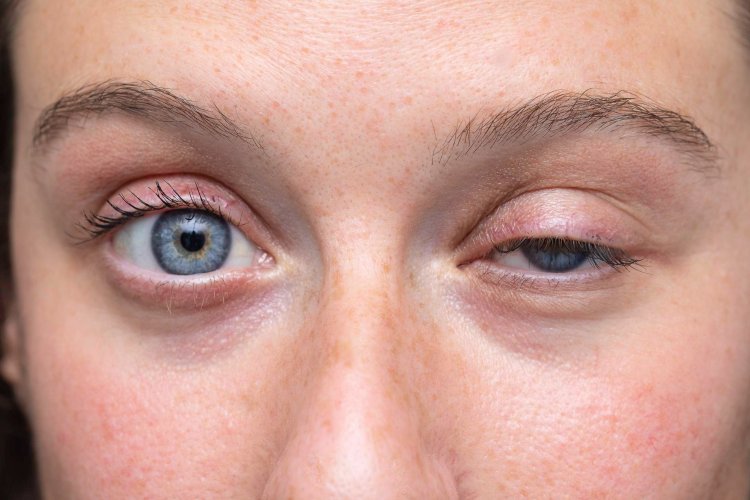Myasthenia Gravis: A Comprehensive Overview
Myasthenia Gravis (MG) is a chronic autoimmune neuromuscular disorder marked by fluctuating muscle weakness and fatigue. This disorder significantly impacts the quality of life due to its progressive nature and the involvement of critical muscle groups. Named from Greek and Latin terms meaning "grave muscle weakness," MG's hallmark is the weakening of voluntary muscles, particularly those controlling the eyes, face, and swallowing.

Pathophysiology
At the core of MG's pathology is an autoimmune attack on the neuromuscular junction. Here, acetylcholine (ACh) is released from nerve endings to bind to receptors on muscle cells, triggering muscle contraction. In MG patients, autoantibodies target these acetylcholine receptors (AChRs) or other proteins associated with the neuromuscular junction, such as muscle-specific kinase (MuSK). This antibody attack impedes the normal transmission of signals, resulting in muscle weakness.
Role of the Thymus Gland
The thymus gland, involved in immune system regulation, is often abnormal in MG patients. Approximately 75% of MG patients have thymic abnormalities, such as hyperplasia (enlargement) or thymomas (tumors). The thymus is believed to contribute to the production of the autoantibodies that attack neuromuscular junctions.
Clinical Presentation
MG presents with a wide range of symptoms, which can vary in severity and distribution. Commonly, symptoms include:
Ocular Myasthenia:
- Ptosis: Drooping of one or both eyelids.
- Diplopia: Double vision due to weakness in the muscles controlling eye movements.
Bulbar Symptoms:
- Dysphagia: Difficulty swallowing.
- Dysarthria: Slurred or impaired speech.
Generalized Myasthenia:
- Weakness in the neck, arms, and legs.
- Fatigue in skeletal muscles with repetitive use, often improving with rest.
- Respiratory muscle involvement, leading to myasthenic crisis—a medical emergency.
Diagnosis
Diagnosis of MG involves multiple tests to confirm the presence of autoantibodies and muscle weakness characteristic of the disease. Key diagnostic tools include:
Clinical Examination:
- Assessment of muscle strength and fatigue, especially after repetitive tasks.
Serological Tests:
- Detection of AChR antibodies, present in about 85% of patients with generalized MG.
- Detection of MuSK antibodies, found in a subset of patients who do not have AChR antibodies.
Electrophysiological Studies:
- Repetitive Nerve Stimulation: Measures the decline in muscle response with repeated nerve stimulation.
- Single-Fiber EMG: Evaluates the variability in time between muscle fiber activation, detecting abnormalities in neuromuscular transmission.
- Edrophonium Test: Administration of edrophonium chloride (a short-acting cholinesterase inhibitor) temporarily improves muscle strength, indicating MG.
Imaging Studies:
- CT or MRI: Used to detect thymomas or thymic hyperplasia.
Treatment
While there is no cure for MG, treatment aims to manage symptoms and improve muscle function. Treatment modalities include:
Symptomatic Treatment:
- Cholinesterase Inhibitors: Medications like pyridostigmine increase the amount of ACh available at the neuromuscular junction, improving muscle contraction.
Immunosuppressive Therapies:
- Corticosteroids: Prednisone can reduce the immune system's attack on the neuromuscular junction.
- Non-Steroidal Immunosuppressants: Azathioprine, mycophenolate mofetil, and cyclosporine can reduce antibody production.
Rapid Immunotherapies:
- Plasmapheresis: A procedure that removes antibodies from the blood, providing temporary relief.
- Intravenous Immunoglobulin (IVIG): Infusion of normal antibodies that modulate the immune system and reduce the effects of the autoantibodies.
Thymectomy:
- Surgical removal of the thymus gland, indicated for patients with thymoma and recommended for some patients without thymoma, can lead to symptom improvement or remission.
Prognosis
The prognosis for MG varies. With appropriate treatment, many patients experience significant improvement and can lead relatively normal lives. However, the disease can be severe and life-threatening, especially when respiratory muscles are involved. Regular monitoring and prompt treatment of exacerbations are crucial.
Research and Future Directions
Ongoing research in MG focuses on understanding the precise mechanisms of autoimmunity, identifying genetic factors, and developing targeted therapies. Advances in biologic therapies, such as monoclonal antibodies, offer hope for more effective and specific treatments with fewer side effects.
In conclusion, Myasthenia Gravis is a multifaceted disorder requiring a comprehensive approach for diagnosis and management. Advances in medical research continue to improve the understanding and treatment of MG, offering hope for better outcomes and quality of life for those affected by this challenging condition.
Disclaimer:
The information provided in this article is for educational purposes only and should not be considered medical advice. If you have any health concerns or are experiencing symptoms, it is important to consult with a healthcare professional, such as a doctor or clinic, for proper diagnosis and treatment. Always seek the advice of your doctor or other qualified health provider with any questions you may have regarding a medical condition. Do not disregard professional medical advice or delay in seeking it because of something you have read in this article.
Hashtags:
#MyastheniaGravis #AutoimmuneDisorder #Neurology #Health #MedicalResearch #ThymusGland #MuscleWeakness #Healthcare #Immunology #ChronicIllness
What's Your Reaction?





















